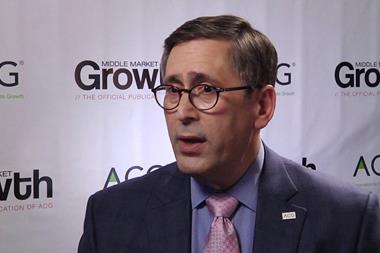Employee wellness is moving up the corporate agenda – at Airmic Fest two experts explore how businesses can look after their staff
Tuesday 22 September 2020
14:00: Session: Employees are often a business’ greatest asset – so it’s time to protect them
Employee wellness is one of the greatest threats to business productivity. On average, 13.4 million working days are lost each year due to mental health illnesses such as stress, anxiety or depression. According to mental health charity MIND, this costs the UK economy £74 billion annually.
Physical health wellbeing also has a significant impact on business resilience. 15 million people in the UK are living with a chronic condition and 77 per cent of workers say that poor wellbeing lowers their productivity at work.
Meanwhile, a poor financial wellbeing can lead to stress and anxiety, exacerbating mental health issues. The coronavirus pandemic has exacerbated this as we move into an economic recession and people’s livelihoods are at risk.
The result of these issues is that businesses investment in the wellbeing of their staff has never been more critical.
Speaking at Airmic Fest, Ally Antell, head of health and wellbeing proposition at Aviva UK explained: “Employees’ wellbeing is front and centre of the performance of your organisation and I think that it is often seen as a negative thing, but actually, it can be an incredibly positive thing.
“Yes your employees are your biggest risk but when you flip that on its head, if you do have highly motivated resilient and healthy employees that are the best they can be, then that is your organisation’s most powerful differentiator.”
Dr. Rodriguez-Fernandez is the Global Medical Director of Non-Communicable Disease (NCDs) and Workplace Wellness for International SOS in London agreed.
He said: “Before, organisations traditionally felt that health was something they were not necessarily responsible in terms of an organisation looking after their employees. But post-Covid we’ve realised that not only does a workplace have the potential to be able to mitigate those risks, it is now an integral part of business continuity.
“Covid-19 it is really created a fundamental shift in the way organisations approach not only employees as a potential risk but also in terms of opportunities and leveraging workplaces to mitigate those risks that traditionally were were not considered part of a business plan or business strategy.”
While the dial has turned both on corporate awareness of the importance of employee wellness and the demand for such initiatives from staff, it is critical that organisations think carefully about their strategies and link them back to wider business objectives. This is important firstly to make sure that benefits are well selected, and secondly to track return on investment for schemes.
Antell concluded: “Clearly you are attempting to improve the physical, mental and financial wellbeing of your staff but also that that’s not the end goal in itself.
“You need to have a much clearer understanding of what it is you’re trying to build in terms of outcome - and for many organisations this reliance by preventing poor wellbeing or helping people recover from wellbeing incidents.
“Ultimately what you are trying to do is to grow your productivity and take away those things that are preventing your employees from operating at their absolute maximum potential which is a very positive outcome to focus on.”
In partnership with






















No comments yet